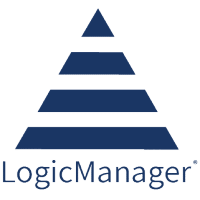Best Risk Management Software & Tools for 2022
Risk management tools consolidate strategies for mitigating and optimizing all enterprise threats and unknowns. They reduce silos within businesses, like departmental silos and data silos, and improve the methods that companies use to visualize risk levels.
- What is risk management software?
- Compare top risk management software
- Advantages of using risk management software
- Tips for considering risk management software
What is risk management software?
Risk management software provides a platform for managing all potential business problems, not just technology or financial. These possible risks, threats, and opportunities alike affect employees, company systems, and physical business property. Risk management tools help companies classify exactly how dangerous or helpful a risk will be to their business operations and help them prioritize that risk (whether that’s to mitigate or optimize it).
Risk management tools use an application portal that contains dashboards for visualizing enterprise risk data, reporting it, and managing risks through automated workflows.
Compare top risk management software
The following eight vendors are some of the top providers in the industry.
Fusion
 Fusion Framework System is a business continuity and risk management solution for enterprises that need plenty of ways to view and analyze data. The platform encompasses six solutions, including a third-party risk management module for identifying and mitigating vendor and supplier risks.
Fusion Framework System is a business continuity and risk management solution for enterprises that need plenty of ways to view and analyze data. The platform encompasses six solutions, including a third-party risk management module for identifying and mitigating vendor and supplier risks.
Fusion also offers an IT and security module, which provides data security risk management. One highlight of this solution is insight that helps businesses create policies to manage the development of emerging technologies, which carry inherent risk. Users can also create action plans for recovering from IT disasters.
Key Features
- Automation for onboarding and assessing third parties
- Supply chain management
- Insights to protect the company while considering emerging technologies
- Disaster recovery planning
- IT risk management for applications, infrastructure, and devices
Con
Fusion has many features and high configurability, which can be challenging for small teams to customize to their needs. Smaller businesses with limited IT or risk teams may not have the management or manpower to reap the full benefits of Fusion’s in-depth platform.
LogicGate
RiskCloud, LogicGate’s risk management solution, includes 11 products in its portfolio. One highlight is RiskCloud’s focus on compliance management: businesses can subject their  processes to compliance assessments and receive a comprehensive list of requirements they must follow. Businesses also have the ability to track regulatory implementation within the company and view their compliance progress.
processes to compliance assessments and receive a comprehensive list of requirements they must follow. Businesses also have the ability to track regulatory implementation within the company and view their compliance progress.
LogicGate’s governance, risk, and compliance features make it a good fit for smaller enterprises that want a broad GRC approach to their risk management.
LogicGate is customizable, but it’s not too difficult for inexperienced users because it uses a no-code process builder: customers can drag and drop to design processes. Because the platform is user-friendly for employees inexperienced in development, businesses don’t need an enormous IT team to make good use of LogicGate.
Key Features
- Risk assessments that can be assigned to company stakeholders
- Mitigation plan tracking
- Workflow management system that automates document collection and requests
- Custom analytics and heat maps
- Weighted risk scores
Cons
- High customizability that small businesses may struggle to utilize or fully implement
- Limited search function within the software
LogicManager
LogicManager offers ten solutions within its risk portfolio, including ones focused on internal audit and fraud, HR and environmental health, and cybersecurity. Businesses use  LogicManager’s taxonomy technology to reduce risk silos and see the relationships between risks and business units.
LogicManager’s taxonomy technology to reduce risk silos and see the relationships between risks and business units.
LogicManager’s GRC advisory team provides individual support to enterprises throughout their time using the platform. An expert analyst, assigned to a company, designs custom training sessions and helps the business create reports when needed.
Key Features
- Risk taxonomy
- Risk advising and customized training
- LogicManager University for accessing help articles and user forums
- Dashboards, heat maps, and risk matrices for risk reporting
- Compliance Library to view and manage compliance data
Cons
- Customers found the user interface outdated
- Users cited limited options for report creation
MetricStream
MetricStream offers reporting, analytics, and metric monitoring for enterprises. Its control testing management solution gives users tools to map controls to risks and regulations and  remediate control issues. MetricStream also offers an integrated risk management (IRM) solution, which seeks to further reduce risk silos within organizations and better map risks between business units.
remediate control issues. MetricStream also offers an integrated risk management (IRM) solution, which seeks to further reduce risk silos within organizations and better map risks between business units.
MetricStream is easily configurable and allows companies to design reports for senior executives and board members. It also offers cybersecurity risk management features.
Key Features
- Heat maps and analytics
- Risk metric monitoring
- Scheduled risk assessments
- Control testing and a library of existing controls
- Executive dashboards
Con
Some users found the software’s workflows insufficient and unintuitive.
Onspring
For smaller enterprises, particularly ones without experienced engineers or IT personnel, Onspring offers a no-code risk management platform. The solution is relatively easy for end  users to adopt, but it’s also highly flexible and customizable—the ideal balance for businesses that want simple implementation but significant configuration options.
users to adopt, but it’s also highly flexible and customizable—the ideal balance for businesses that want simple implementation but significant configuration options.
Multiple customers spoke of Onspring as a business partner, not just a software vendor. Onspring assigns each business a designated team member who helps them implement the solution.
Key Features
- Improving auditing with automation and audit tracking
- Responsive support team
- Contract management
- Analytics, heat maps, and risk dashboards
Con
Infrequent software updates could mean waiting a while for new features to roll out.
Reciprocity
 Reciprocity’s ZenGRC platform offers audit management, privacy regulation controls, and incident management for enterprises. Businesses work with a dedicated customer success manager. These CSMs answer questions and help clients implement the software initially, also assisting them throughout the rest of their time with Reciprocity.
Reciprocity’s ZenGRC platform offers audit management, privacy regulation controls, and incident management for enterprises. Businesses work with a dedicated customer success manager. These CSMs answer questions and help clients implement the software initially, also assisting them throughout the rest of their time with Reciprocity.
Reciprocity users can view their data privacy progress, storing all of their assessments and the status of all their compliance programs.
Key Features
- Privacy and compliance management
- Incident management
- Audit management
- ZenConnect, an integration platform for connecting business applications to ZenGRC
Cons
- Needs more manageable role-based access controls
- Has limited dashboard customization options
Resolver
Resolver is ideal for enterprises that want their risk management approach to focus on security. Its cloud-based platform offers third-party vendor management, which takes  breaches and compliance issues into account and provides vendor assessments.
breaches and compliance issues into account and provides vendor assessments.
One standout feature is the customer support: Resolver receives multiple shoutouts from customers for its staff support team. Resolver also has plenty of configurations available, but because it takes time to implement and learn, it’s better for organizations that have the bandwidth to spend time customizing it.
Key Features
- Incident analysis and incident management progress
- Third-party risk management
- Strong customer support team
- Automated task management
Cons
- Some customers found Resolver difficult to use, with an overwhelming amount of options and features
- Implementation takes significant time
StandardFusion
 StandardFusion is a risk management solution with an emphasis on governance, risk, and compliance (GRC), mapping all things compliance to each other and helping businesses meet international standards. StandardFusion’s risk analysis dashboard shows comprehensive data on each risk, including workflow state, treatment, and level of confidentiality. It also quantifies the risk’s business impact on a numbered scale.
StandardFusion is a risk management solution with an emphasis on governance, risk, and compliance (GRC), mapping all things compliance to each other and helping businesses meet international standards. StandardFusion’s risk analysis dashboard shows comprehensive data on each risk, including workflow state, treatment, and level of confidentiality. It also quantifies the risk’s business impact on a numbered scale.
StandardFusion’s team has actively updated the software in recent years, addressing user requests.
Key Features
- Vendor management questionnaires and reviews
- Audit management that shows status, owner, and workflow state
- Support for multiple international regulatory standards
- Slack and Jira integrations
- Regular platform updates
Con
Customers addressed that the platform and team are still growing, which means some features aren’t fully developed to user satisfaction.
Advantages of using risk management software
Implementing risk management tools provides a twofold advantage.
First, businesses have increased awareness of major risks they face and how to better manage and mitigate them. Risk management tools allow organizations to continuously identify risks they may not have initially recognized.
The second advantage is that employees, including executive team members, work together and reduce company silos. The more departments are aware of risks, the more a business is able to either minimize or maximize their impact.
Tips for considering risk management tools
Choosing the right risk management tool almost entirely depends on knowing your business’s needs well.
If your organization needs a risk management solution that heavily integrates with other software—such as a variety of databases or collaboration tools—choose a platform that has a wide variety of integrations. This is important for companies that want their risk data to have the least amount of silos as possible.
However, some risk management tools require greater customization. Companies with experienced IT teams are better prepared for highly flexible, customizable risk management solutions; smaller businesses with few to no IT personnel will find those solutions challenging to implement and use daily.
Additionally, speak with representatives from the vendor so you know what they specialize in—whether it’s security, like Resolver, or governance and compliance, like StandardFusion. If your business’s priorities align with a software vendor’s goals, then that vendor is likely a viable option.
Read Next: Top Business Continuity Software

